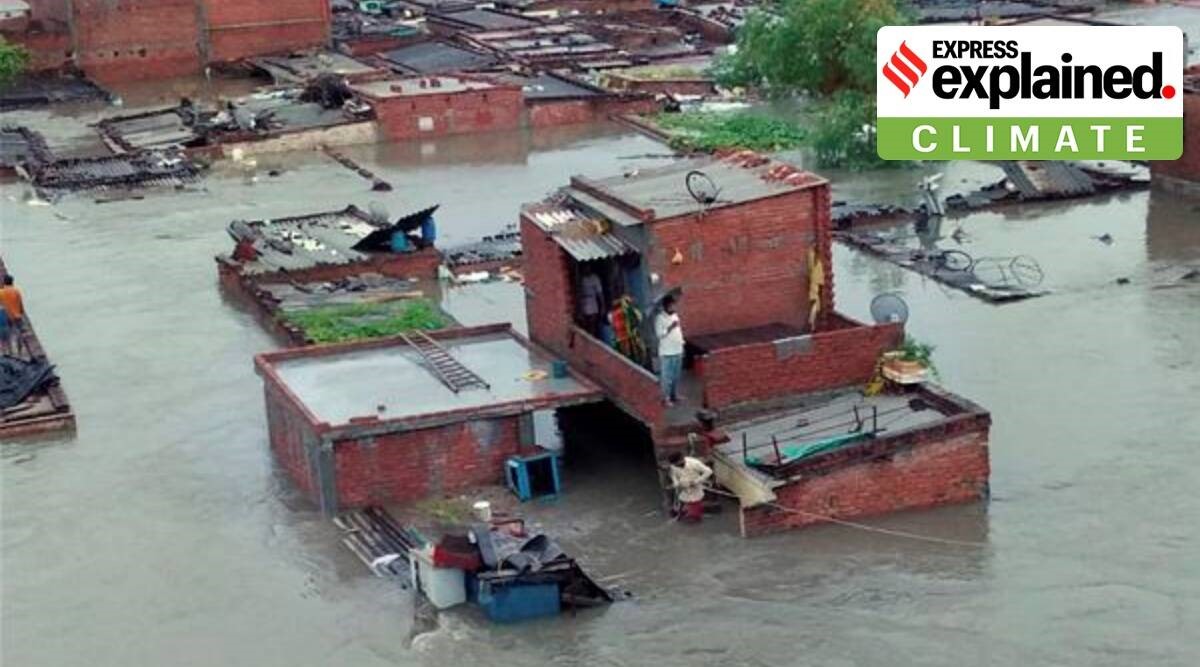Climate vulnerability index

- Copyright infringement is not intended
Context: Environmental think tank Council on Energy, Environment and Water has carried a first-of-its-kind district-level climate vulnerability assessment, or Climate Vulnerability Index (CVI).
- It has analysed 640 districts in India to assess their vulnerability to extreme weather events such as cyclones, floods, heatwaves, droughts, etc.
How is the Climate Vulnerability Index assessed?
- The CVI maps
- exposure (that is whether the district is prone to extreme weather events),
- sensitivity (the likelihood of an impact on the district by the weather event), and
- adaptive capacity (what the response or coping mechanism of the district is).
- It helps map critical vulnerabilities and plan strategies to enhance resilience and adapt by climate-proofing communities, economies and infrastructure. Instead of looking at climate extremes in isolation.
Why does India need a climate vulnerability index?
- According to Germanwatch’s 2020 findings, India is the seventh-most vulnerable country with respect to climate extremes.
- Extreme weather events have been increasing in the country such as supercyclone Amphan in the Bay of Bengal, which is now the strongest cyclone to be recorded in the country.
- Recent events such as the landslides and floods in Uttarakhand and Kerala, have also increased in the past decade.
What are the findings of the climate vulnerability index?
- According to CVI, Assam, Andhra Pradesh, Maharashtra, Karnataka and Bihar are most vulnerable to extreme climate events such as floods, droughts and cyclones in India.
- While 27 Indian states and union territories are vulnerable to extreme climate events, 463 districts out of 640 are vulnerable to extreme weather events
- More than 80 per cent Indians live in districts vulnerable to climate risks – that is 17 of 20 people in India are vulnerable to climate risks, out of which every five Indians live in areas that are extremely vulnerable
- More than 45 per cent of these districts have undergone “unsustainable landscape and infrastructure changes’’.
- North-eastern states are more vulnerable to floods.
- South and central are most vulnerable to extreme droughts
Which are the best performing states and why?
- The CVI has ranked 20 states out of which Assam and Andhra Pradesh are the most vulnerable to extreme weather events, and Kerala, Tripura and West Bengal are the least vulnerable.
- Kerala and west Bengal have performed well comparatively, despite both being coastal states and dealing with the threat of cyclones and floods annually.
- The Index takes into account certain indicators like availability of critical infrastructure like cyclone and flood shelters, government mechanisms in place including updating of disaster management plans, mitigation strategies, standard operating procedures before, during and after an extreme weather event such as how people and livestock are being evacuated or how food is being mobilised and how the administration prevents loss of lives and livelihoods.
What are the recommendations that have been made?
- Develop a high-resolution Climate Risk Atlas (CRA) to map critical vulnerabilities at the district level and better identify, assess, and project chronic and acute risks such as extreme climate events, heat and water stress, crop loss, vector-borne diseases and biodiversity collapse.
- A CRA can also support coastal monitoring and forecasting, which are indispensable given the rapid intensification of cyclones and other extreme events.
- Establish a centralised climate-risk commission to coordinate the environmental de-risking mission.
- Undertake climate-sensitivity-led landscape restoration focused on rehabilitating, restoring, and reintegrating natural ecosystems as part of the developmental process.
- Integrate climate risk profiling with infrastructure planning to increase adaptive capacity.
- Provide for climate risk-interlinked adaptation financing by creating innovative CVI-based financing instruments that integrate climate risks for an effective risk transfer mechanism.
https://indianexpress.com/article/explained/climate-vulnerability-index-ceew-explained-7593385/



1.png)
